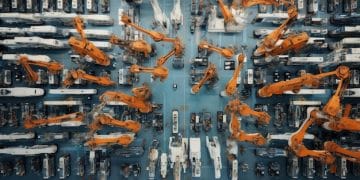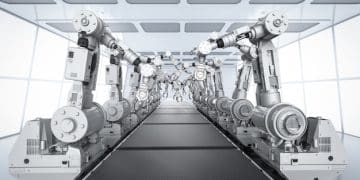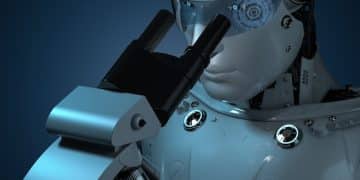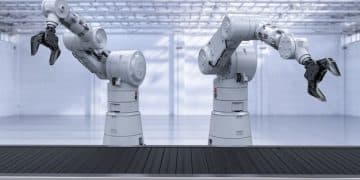Will New US Robotics Regulations Impact Manufacturing Automation by 15% in 2025?
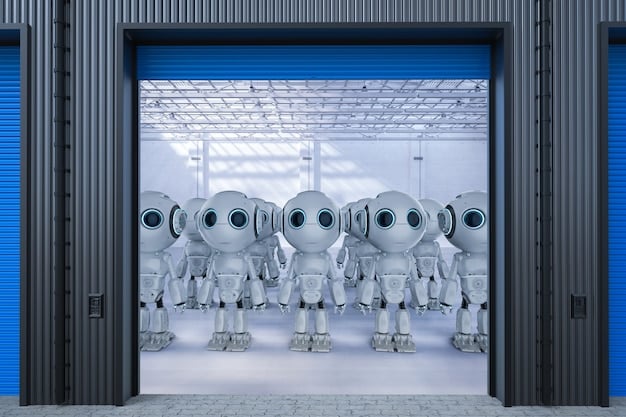
The potential impact of new US robotics regulations on manufacturing automation by 15% in 2025 is uncertain, heavily depending on the scope, implementation, and industry adoption rates of any proposed frameworks, and could range from minimal disruption to significant shifts in investment and operational strategies across sectors.
The landscape of manufacturing is continually evolving, driven by unprecedented advancements in automation and robotics. As these technologies become more integrated into industrial processes, questions regarding their oversight and regulation inevitably arise. A pressing query resonating through boardrooms and factory floors today is: Will new US robotics regulations impact manufacturing automation by 15% in 2025? This question delves into the speculative yet critical interplay between policy and technological adoption, aiming to understand whether forthcoming legislative frameworks could measurably slow or reshape the rapid pace of automation.
Understanding the Current State of US Manufacturing Automation
US manufacturing has been on a strong trajectory towards increased automation. Driven by the need for higher efficiency, reduced labor costs, improved precision, and enhanced safety, industries from automotive to electronics have significantly invested in robotic systems. This push is not merely about replacing human labor but about augmenting capabilities, dealing with complex tasks, and maintaining competitiveness on a global scale. The adoption curve has been steep, with various reports indicating a consistent rise in robot installations across diversified sectors.
The current regulatory environment for robotics in manufacturing is largely segmented and often reactive. There isn’t a single, overarching federal framework specifically designed for industrial robots. Instead, existing regulations, such as those from the Occupational Safety and Health Administration (OSHA), apply to the safety aspects of machinery in the workplace, which inherently includes robotic systems.
Safety Standards and Compliance
The primary focus of current regulatory efforts revolves around worker safety. Standards from organizations like the American National Standards Institute (ANSI) and Robotic Industries Association (RIA) provide guidelines for robot safety. These are industry-led and voluntary but are often adopted as best practices, influencing design, installation, and operation. Compliance largely stems from a combination of internal corporate policies, insurance requirements, and general workplace safety mandates.
- ANSI/RIA R15.06: This standard outlines safety requirements for industrial robots and robot systems. Its importance cannot be overstated as it forms the bedrock for safe robot deployment.
- OSHA General Duty Clause: Requires employers to provide a workplace free from recognized hazards likely to cause death or serious physical harm. This broad clause is the legal underpinning for robot safety enforcement.
- ISO 10218: An international standard for robot safety, often harmonized with national standards like ANSI/RIA R15.06, ensuring global consistency in safety protocols.
Beyond safety, other regulations touch upon aspects like data privacy (though less prevalent in direct manufacturing automation), electromagnetic compatibility, and energy efficiency. However, none of these collectively form a comprehensive “robotics regulation” that directly governs the rate or type of automation deployment beyond health and safety considerations. This fragmented landscape means that any new consolidated regulation could indeed introduce significant new variables for manufacturers.
The current absence of a holistic federal approach to robotics regulation presents a dual-edged sword. On one hand, it has allowed for rapid innovation and deployment without bureaucratic hurdles. On the other, it leaves room for potential future challenges, particularly concerning ethical considerations, cybersecurity, and societal impacts like workforce displacement. As the conversation around these broader implications grows, so too does the likelihood of more comprehensive regulatory intervention in the coming years.
Ultimately, understanding the existing regulatory baseline is crucial for evaluating the potential ripple effects of new regulations. The current system emphasizes safety and relies heavily on industry best practices rather than direct government mandates on automation levels themselves.
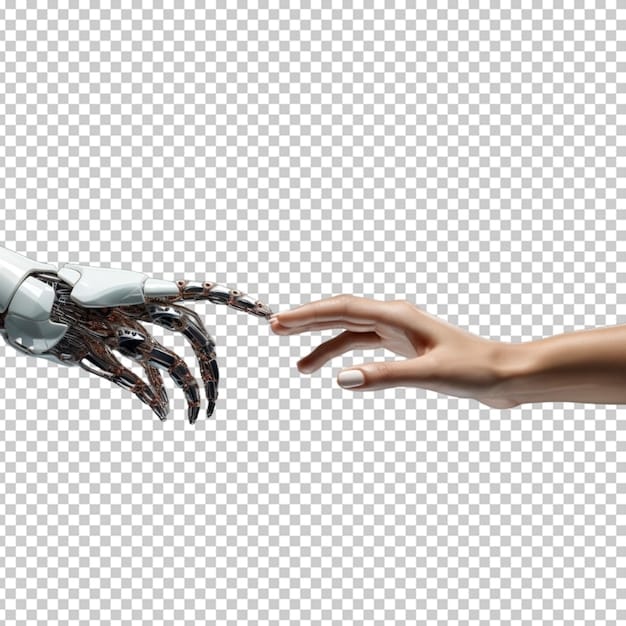
Potential Drivers for New US Robotics Regulations
The concept of new US robotics regulations isn’t emerging in a vacuum; it’s a response to several evolving societal, economic, and technological factors. As robots become more sophisticated and ubiquitous, their impact extends beyond immediate operational efficiency to broader societal implications. Understanding these drivers is key to anticipating the nature and scope of any forthcoming legislative action.
One of the foremost concerns driving regulatory discussions is the impact on employment and the future of work. While automation often leads to increased productivity and the creation of new types of jobs, it also raises legitimate anxieties about job displacement, particularly in sectors heavily reliant on repetitive tasks. Policymakers are increasingly pressured to address how the workforce can adapt to this robotic revolution, through retraining programs, social safety nets, or even concepts like “robot taxes.”
Ethical Considerations and Societal Impact
Beyond economic concerns, the ethical dimensions of advanced robotics are gaining prominence. As robots acquire more autonomous capabilities, questions arise about accountability in accident scenarios, data privacy (especially with robots interacting in public or personal spaces), and algorithmic bias. The development of artificial intelligence (AI) within robotics systems complicates these ethical dilemmas, pushing for frameworks that ensure responsible and transparent design and deployment.
- Worker Safety and Human-Robot Interaction: Enhanced regulations might seek to specifically define safe operating parameters for collaborative robots (cobots) that work alongside humans, going beyond traditional safeguarding.
- Data Privacy and Cybersecurity: As industrial robots become more connected, they gather vast amounts of data. Regulations could mandate specific cybersecurity protocols to prevent breaches and protect proprietary information or operational integrity.
- Algorithmic Transparency and Bias: For autonomous decision-making robots, rules might emerge requiring explainability in their algorithms and mechanisms to prevent embedded biases that could lead to unfair or discriminatory outcomes.
National security and supply chain resilience also serve as significant drivers. As manufacturing processes become highly automated and interconnected, their vulnerability to cyberattacks or foreign interference increases. Regulations might aim to secure critical manufacturing infrastructure, promote domestic robot production, or dictate standards for technology provenance to protect national interests.
Furthermore, the rapid pace of technological innovation often outstrips existing legal frameworks. The current regulatory environment, largely comprising
general safety laws and voluntary industry standards, may be deemed insufficient to address the complexities of advanced AI-driven robots. Policymakers recognize the need for proactive legislation that can guide technological development rather than react to its unforeseen consequences.
Finally, international competition could also influence US regulatory efforts. As other major industrial nations develop their own robotics policies, the US may feel compelled to establish clear guidelines to maintain its competitive edge, attract investment, and ensure fair trade practices. These multifaceted pressures suggest that any new regulations would likely be comprehensive, seeking to balance innovation with societal well-being and national interests.
Modeling a 15% Impact on Manufacturing Automation
Forecasting a precise 15% impact on manufacturing automation by 2025 due to new regulations requires a detailed hypothetical model, as such a figure is highly specific and depends on a multitude of variables. An impact of this magnitude suggests a significant shift, implying either a slowdown in adoption, a redirection of investment, or changes in how automation projects are executed.
A 15% impact could manifest in several ways. It might mean a 15% reduction in the annual growth rate of robot installations across US manufacturing. For example, if the expected growth was 20% year-over-year, a 15% impact from regulations could reduce that to a 5% effective growth. Alternatively, it could mean that 15% fewer planned automation projects proceed as initially envisaged, or that the cost of deploying automation increases by 15% due to compliance requirements, making some projects economically unviable.
Scenarios for Regulatory Influence
Let’s consider various hypothetical regulatory scenarios that could lead to such an impact:
- High Compliance Costs: New rules requiring extensive safety certifications, mandatory worker retraining programs, or specific data security audits could significantly increase the capital expenditure and operational costs associated with automation. A 15% increase in total cost of ownership for robotic systems could dissuade some companies from investing.
- Permitting and Bureaucracy: If new regulations introduce lengthy permitting processes, require extensive environmental impact assessments for large-scale robot deployments, or mandate specific government approvals for AI-driven automation, these delays could organically slow down rollout.
- Liability Shifts: Regulations that reassign liability for robot-related incidents from the operator to the manufacturer or even the AI developer could lead to a more conservative approach in developing and deploying cutting-edge, highly autonomous systems. This increased risk could temper innovation or market entry.
- Workforce Transition Mandates: Laws requiring significant investments in retraining programs for displaced workers, or mandating certain human-robot ratios, might add a substantial operational overhead that influences automation decisions.
The 15% figure isn’t just about slowing down, it could also be about redirection. For instance, regulations promoting “human-in-the-loop” automation or collaborative robotics over fully autonomous systems might shift investments towards specific types of automation, effectively reducing the adoption of others.
The elasticity of demand for automation is also a factor. Larger manufacturers with deep pockets might absorb increased costs or navigate complex regulatory landscapes more easily than small and medium-sized enterprises (SMEs). This could create a divergence, where SMEs reduce their automation ambitions by 15% or more, while larger players see a lesser impact.
Realistically, a 15% impact is a substantial but not catastrophic figure. It indicates a noticeable friction or cost, but not a complete halt to automation. The precise number would be an aggregate of various responses across different industries, each interpreting and adapting to the new regulatory environment in its own way. The accuracy of such a prediction would rely heavily on the specificity and enforcement of the hypothetical new regulations, making it a complex challenge to model with high precision without knowing the actual legislative details.
Industry Perspectives: What Manufacturers Are Saying
The potential for new US robotics regulations elicits a range of responses from manufacturing industry leaders. While there’s a general understanding that some level of oversight is inevitable as technology advances, the concern lies squarely on the nature and extent of those regulations. Manufacturers are particularly sensitive to anything that could stifle innovation, increase operational costs, or reduce their global competitiveness.
Many industry proponents argue for a “light touch” regulatory approach, emphasizing industry-led standards and self-governance rather than prescriptive government mandates. They believe that manufacturers are best positioned to understand the practicalities and safety requirements of their own operations and that overly rigid rules could quickly become outdated due to the rapid pace of technological change. This perspective often highlights the economic benefits of automation: increased productivity, higher-quality products, and the ability to bring manufacturing back to the US.
Concerns and Recommendations
Concerns frequently voiced by manufacturers include:
- Increased Compliance Burden: Small and medium-sized enterprises (SMEs) are particularly worried. They often lack the resources, legal teams, and capital to navigate complex new regulations and certifications, potentially putting them at a disadvantage compared to larger corporations.
- Innovation Stifling: Fear that broad, unnuanced regulations could inadvertently slow down research and development, especially in cutting-edge areas like AI-driven adaptive robotics or human-robot collaboration, where the rules of engagement are still being defined.
- Competitive Disadvantage: If US regulations are significantly more stringent or costly than those in other major manufacturing nations, it could make US-based production less attractive, potentially driving investment overseas.
- Talent Pipeline vs. Displacement: While acknowledging the need for workforce reskilling, manufacturers seek regulations that support creating new roles (e.g., robot technicians, data analysts) rather than punitive measures that simply penalize automation for job displacement.
Manufacturers often recommend a collaborative approach, urging policymakers to engage closely with industry experts, engineers, and roboticists when drafting regulations. They advocate for agile, adaptable frameworks that can evolve with technology, rather than rigid laws. There’s also a strong call for regulations to be clear, predictable, and harmonized with international standards where possible, to facilitate global trade and technology adoption.
Some larger corporations, having already invested heavily in automation and robust safety protocols, might be less impacted by certain types of regulations. However, even they express concerns about potential costs associated with new data privacy mandates or liability shifts. The consensus is that any legislation must ultimately foster innovation and economic growth while addressing legitimate societal concerns, rather than create unnecessary hurdles. The industry’s message is clear: regulate intelligently, incrementally, and in partnership with those on the front lines of manufacturing automation.
Economic Implications: Costs and Benefits of Regulation
The economic implications of new robotics regulations are complex, involving a delicate balance between potential costs and perceived benefits. Any regulatory framework introduces either direct or indirect costs, but it can also yield significant long-term advantages that might outweigh the initial investment. Understanding this duality is crucial for a nuanced perspective on the 15% impact question.
On the cost side, compliance is often the most immediate burden. Manufacturers might face increased expenses for new equipment certifications, software updates to meet data security or transparency mandates, and investments in worker retraining programs. Legal and administrative costs for navigating new bureaucratic processes could also add up. If regulations necessitate slower adoption rates or specific technology choices, it could also mean foregone productivity gains, indirectly impacting profitability.
Quantifying Regulatory Impact
A hypothetical 15% impact on automation could translate to:
- Reduced Investment: A 15% decline in new robot installations or automation project starts, leading to slower modernization of manufacturing facilities.
- Increased Unit Costs: Higher overheads due to compliance could translate to a 15% increase in the production cost of certain goods, potentially affecting consumer prices or international competitiveness.
- Delayed Market Entry: Slower regulatory approvals could delay the introduction of innovative automated products or services by 15% of their intended timeline.
Conversely, the benefits of well-crafted regulations can be substantial. Enhanced safety standards, while costly to implement, lead to fewer workplace accidents, reducing healthcare costs, insurance premiums, and litigation risks. This creates a safer, more stable working environment, potentially improving worker morale and retention. Ethical guidelines, particularly concerning data privacy and algorithmic fairness, can build public trust in automation technologies, fostering broader acceptance and adoption over the long run.
From a broader economic perspective, regulations could stimulate new industries and job categories. The need for regulatory compliance could create growth in fields like robotics cybersecurity, ethical AI consulting, and specialized training programs for the automated workforce. Furthermore, a stable and predictable regulatory environment can attract long-term investment by reducing uncertainty, even if initial compliance costs are higher.
Ultimately, the net economic impact hinges on the specific design of the regulations. Overly restrictive or poorly conceived policies could indeed lead to the higher end of the 15% negative impact. However, well-balanced regulations that prioritize safety, ethics, and innovation through collaborative development with industry stakeholders could mitigate negative effects and unlock new economic opportunities. The goal is to move beyond a simplistic “cost vs. no cost” mentality to one that weighs compliance against long-term societal and economic resilience.
Anticipated Challenges and Opportunities for 2025
Looking ahead to 2025, the prospect of new US robotics regulations presents a unique set of challenges and opportunities for the manufacturing sector. The ability of businesses to adapt and thrive will largely depend on their foresight and agility in navigating this evolving landscape, potentially influencing whether any impact nears the 15% mark or is effectively absorbed.
One of the primary challenges will be the inherent adaptability required from manufacturers. Depending on the scope of regulations, companies may need to rapidly reassess their automation strategies, invest in new compliance infrastructure, or retrain their workforce. This operational pivot can be particularly taxing for smaller firms with limited capital and human resources. The challenge also includes keeping pace with the detailed requirements, as regulatory frameworks are often complex and require specialized legal and technical expertise.
Navigating the Regulatory Horizon
Key challenges for manufacturers might include:
- Uncertainty: The lack of concrete regulatory details creates an environment of uncertainty, making long-term planning for automation investments difficult.
- Integration Complexities: Retrofitting existing automated systems to comply with new safety or data standards could be technically challenging and expensive.
- Talent Gap: A potential shortage of skilled professionals who can manage and maintain highly regulated robotic systems, or train the existing workforce, could compound difficulties.
- Global Harmonization: Divergence between US regulations and international standards could create friction for multinational corporations, complicating global supply chains and product development.
However, alongside these challenges, significant opportunities emerge. Companies that proactively embrace and even exceed new regulatory standards can gain a competitive advantage. Demonstrating a commitment to ethical AI, worker safety, and robust cybersecurity can enhance a company’s brand reputation, attract top talent, and appeal to customers who value responsible manufacturing. Early adopters might also influence the direction of future regulatory development, ensuring frameworks are practical and industry-friendly.
Furthermore, new regulations could spur innovation in specific areas. For instance, if regulations emphasize collaborative robotics or human-centric automation, it could accelerate R&D in these fields, leading to safer, more intuitive, and versatile robotic systems. The need for transparency and explainability in AI could also drive advancements in auditing tools and software interfaces for complex robotic processes.
The regulatory push might also accelerate the development of a more resilient domestic supply chain for robotics components and expertise, reducing reliance on foreign sources. Companies specializing in compliance solutions, risk assessment, and training for automated environments could see significant growth opportunities. In essence, while the path to 2025 may involve navigating new regulatory hurdles, it also opens avenues for strategic competitive differentiation and fosters a more sustainable, ethically grounded manufacturing future.
Beyond 2025: Long-Term Outlook for Robotics in US Manufacturing
Looking beyond 2025, the trajectory of robotics in US manufacturing will likely be shaped by a combination of technological evolution, societal adaptation, and the maturity of its regulatory environment. While the immediate focus might be on the potential impact of new regulations, the long-term outlook suggests continued growth and integration of automation, albeit perhaps with a more structured and ethically conscious approach.
Even with new regulations, the fundamental drivers for automation remain strong: labor shortages, the demand for high-precision manufacturing, the need for increased productivity to compete globally, and the desire to improve working conditions by offloading hazardous or repetitive tasks. These forces will continue to propel investment in robotics, meaning any regulatory “slowdown” is more likely to be a re-calibration or managed growth rather than a halt.
Evolving Ecosystems and Future Trends
Future trends influencing automation include:
- Increased Cobot Adoption: Collaborative robots are expected to become even more prevalent, working alongside humans and blurring the lines between human and machine tasks. Regulations might accelerate this by prioritizing safe human-robot interaction.
- AI and Machine Learning Integration: Robotics will become increasingly intelligent, leveraging AI for predictive maintenance, adaptive manufacturing, and complex decision-making. Future regulations will need to address the ethical implications and accountability of these advanced systems.
- Modular and Flexible Automation: Manufacturers will seek more agile and reconfigurable robotic solutions, allowing them to quickly adapt to changing market demands and product variations.
- Digital Twins and Simulation: The use of digital twins for simulating and optimizing factory layouts and robot operations before physical deployment will become standard, enhancing efficiency and reducing risks.
- Skills Evolution of the Workforce: The nature of jobs will continue to shift. Instead of solely operational roles, more positions will emerge in robot programming, maintenance, data analysis, and human-robot collaboration management.
The long-term outlook also envisions a more integrated ecosystem where robots, AI, and humans work seamlessly together. Regulations could play a crucial role in ensuring this integration is harmonious, fair, and secure. This might manifest as national standards for interoperability, common data protocols, or frameworks for ensuring the “digital rights” of workers interacting with advanced automated systems.
While a 15% impact by 2025 might be a temporary speed bump for some sectors, the innovation imperative and economic drivers are powerful enough to ensure continued automation post-2025. The coming years will likely define the parameters for responsible and sustainable robotics deployment, ultimately leading to a more resilient, competitive, and human-centric US manufacturing landscape.
The long-term success of US manufacturing automation hinges not on avoiding regulation, but on shaping it into a framework that fosters innovation, ensures ethical deployment, and mitigates adverse societal effects. The journey beyond 2025 will be about achieving a sophisticated symbiosis between technological progress and thoughtful governance, ensuring that the benefits of robotics are widely distributed and its challenges effectively managed.
| Key Aspect | Brief Impact |
|---|---|
| 📈 Automation Growth | Potential re-calibration or slowed adoption rate, not a halt. |
| 💸 Compliance Costs | Increased capital and operational expenses for manufacturers. |
| ⚖️ Regulatory Focus | Likely on safety, ethics, data, and workforce transition. |
| 🌐 Global Competitiveness | Could be affected by divergence in international regulations. |
Frequently Asked Questions About US Robotics Regulations
▼
No, there isn’t a single, comprehensive federal regulation specifically for industrial robots. Existing oversight primarily falls under broader occupational safety laws, such as those from OSHA, alongside voluntary industry standards like ANSI/RIA R15.06, which focus on safety in the workplace where robots are present.
▼
Key concerns include potential job displacement due to automation, the need for enhanced worker safety amidst human-robot collaboration, ethical considerations surrounding AI and autonomy (e.g., algorithmic bias, accountability), and cybersecurity risks associated with connected industrial systems.
▼
SMEs might face disproportionate challenges. Increased compliance costs, complex legal requirements, and the need for specialized expertise could place a significant burden on their limited resources, potentially making automation less accessible or more financially taxing for these businesses.
▼
Yes. Well-designed regulations can build public trust, clarify ethical boundaries, reduce safety risks, and create a predictable environment for investment. This could foster more responsible innovation, leading to more robust, secure, and widely accepted automation technologies, stimulating long-term growth.
▼
If US regulations are significantly more stringent or costly than those in competitor nations, it could potentially raise production costs and lessen comparative advantage. However, if they encourage innovation and build trust in US-made automated products, they could enhance long-term competitiveness.
Conclusion
The question of whether new US robotics regulations will impact manufacturing automation by 15% in 2025 is less about a precise numerical prediction and more about understanding the complex interplay between policy, technological advancement, and economic realities. While a 15% impact is a substantial figure, implying a re-calibration in growth or increased operational costs, it also underscores the growing recognition that the rapid evolution of automation requires thoughtful governance. The manufacturing sector’s trajectory beyond 2025 will be defined by its ability to assimilate these regulatory shifts, transforming initial challenges into opportunities for safer, more ethical, and ultimately more resilient production systems. The future of US manufacturing automation will hinge on striking a delicate balance: fostering innovation while ensuring responsible deployment that benefits both industries and society at large.

